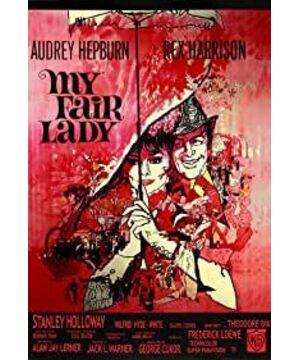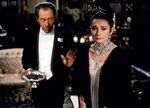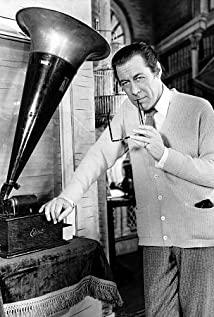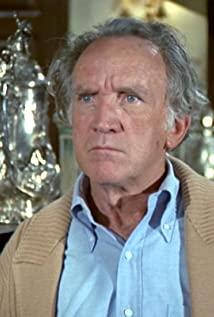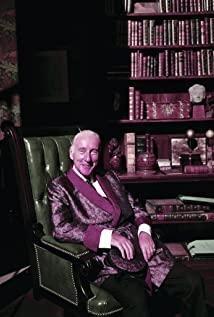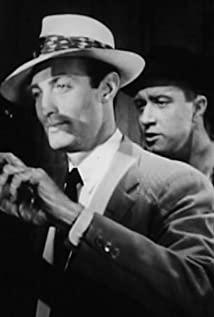In my love for the goddess Audrey Hepburn, I watched the movie "My Fair Lady" starring her. The film tells the story of a flower girl named Eliza, whose vulgar accent catches the attention of linguistics professor Higgins, who makes a bet with others that Eliza will be transformed into an elegant duchess within six months. The transformation of Eliza was realized in the difficult transformation, and it also secretly prompted the emergence of a relationship. But Higgins, who has always claimed to be celibate, never noticed the secret budding affection, and after a series of contradictions, the two reunited.
The film was directed by George Cook, known as the "female director". From the series of films he once directed, such as Gone With the Wind, it can be seen that he is very good at dealing with female-themed films, highlighting the advantages of heroines, and demonstrating his independent consciousness against traditional female oppression. And "My Fair Lady" highlights the self-awakening of women. At the same time, this film also embodies the director's artistic aesthetics, and profoundly interprets the highly praised "every frame is a painting".
Next, I will analyze the content of this film in three aspects.
1. This is a story of a woman's self-awakening.
"Do you think I'm going to stay and be someone who doesn't mean much to you? You think I'm a robot?—a machine without emotion? Can bear the only morsel of bread I've ever taken out of my mouth. Take away, and pour the last drop out of my cup? Do you think that just because I am poor, low, unbeautiful, and short, I have no soul and no heart?—You are wrong! I As much as you have a soul - and a heart too! If God had given me a little beauty and a great deal of wealth, I would have made it as hard for you to leave me as I am now. Customs, conventions, not even talking to you in flesh and blood, as if we had all passed away, standing together before God, equal to each other." I thought of Jane Eyre many times while watching the movie In this book, I have to say that Eliza shares many similarities with Jane Eyre in terms of character. The awakening consciousness of women is vividly reflected in it.
2. A story that truly reflects the social reality through the use of exaggerated techniques.
1. The social history of women daring to fight. After consulting, the film was shot in 1957. Combined with the background of the times, the feminist movement officially developed in the 19th century. After the end of World War II, World War II promoted the liberation of women to a certain extent. The legal status of Western women has been greatly improved, which is the biggest achievement of feminism's years of struggle. So this is also an important reason why Eliza has an independent personality and strong self-esteem.
2. Victims of class differentiation. Similar to the popular program "Transformation" a few years ago, after seeing the prosperity of the upper class, Eliza has formed a huge contrast with her previous life, so it is difficult to accept the former downfall, but at the same time her status is not enough. Due to her limitations, she did not belong to the upper class, so she became a "lone soul" wandering between classes, not knowing where to go.
At the same time, the film not only reveals the contrast between the upper class and the lower class, but also the helplessness of the middle class. Without the freedom of the lower class, the elegance of the upper class cannot be achieved. Behind the material enjoyment of the scenery is the occupational pressure of stopping at the mouth, and behind the decent social status is the identity anxiety of worrying about gains and losses. They are prosperous, richer than most, richer than most, lacking than above, but unable to escape.
3. To satirize the bad phenomena of society in an exaggerated tone, most of them are in the form of singing by actors.
It is not "singing when a word disagrees". Musical films usually express the inner emotional color of the protagonist in the form of singing, which is similar to the large number of psychological descriptions in literary works. We can see a girl's heartbeat through Eliza's singing; we can see a woman's independence and self-transformation through Eliza's singing; we can see his arrogance and duplicity through Higgins' singing . Higgins exaggerates Eliza's contempt from beginning to end through singing, which truly reflects the oppression of women in that society.
Skill Analysis
1. The film reveals the artificiality of the upper class through a large number of contrast montages. In the banquet scene, Eliza's dress is also very special. When most people choose solid colors and gorgeous clothes, Eliza's dress highlights the use of black and white lines to highlight that her aristocracy seems to be integrated into the so-called "noble". Incongruous incongruity. At the same time, through a variety of changes in different scenes, it alludes to the director's mockery and irony of this series of social phenomena.
2. The actor's original performance is also a highlight of the film, especially the use of eyes is extremely wonderful.
I excerpted the scene where Eliza returned to the former slum once again after the successful transformation. In this scene, Eliza has realized the helplessness of being separated from different classes, but she hopes that any class can accept her. So when I see someone I once knew, I desperately want to be recognized, but I don't succeed. During this period, the actor realized the emotional transformation from sadness to hope to loneliness through the use of eyes.
The film has won 8 Oscar awards including the Best Picture Award, as well as more than 20 awards such as the Golden Globe Award for Best Director and Best Actor. It has also been selected into the student textbooks. of.
View more about My Fair Lady reviews


